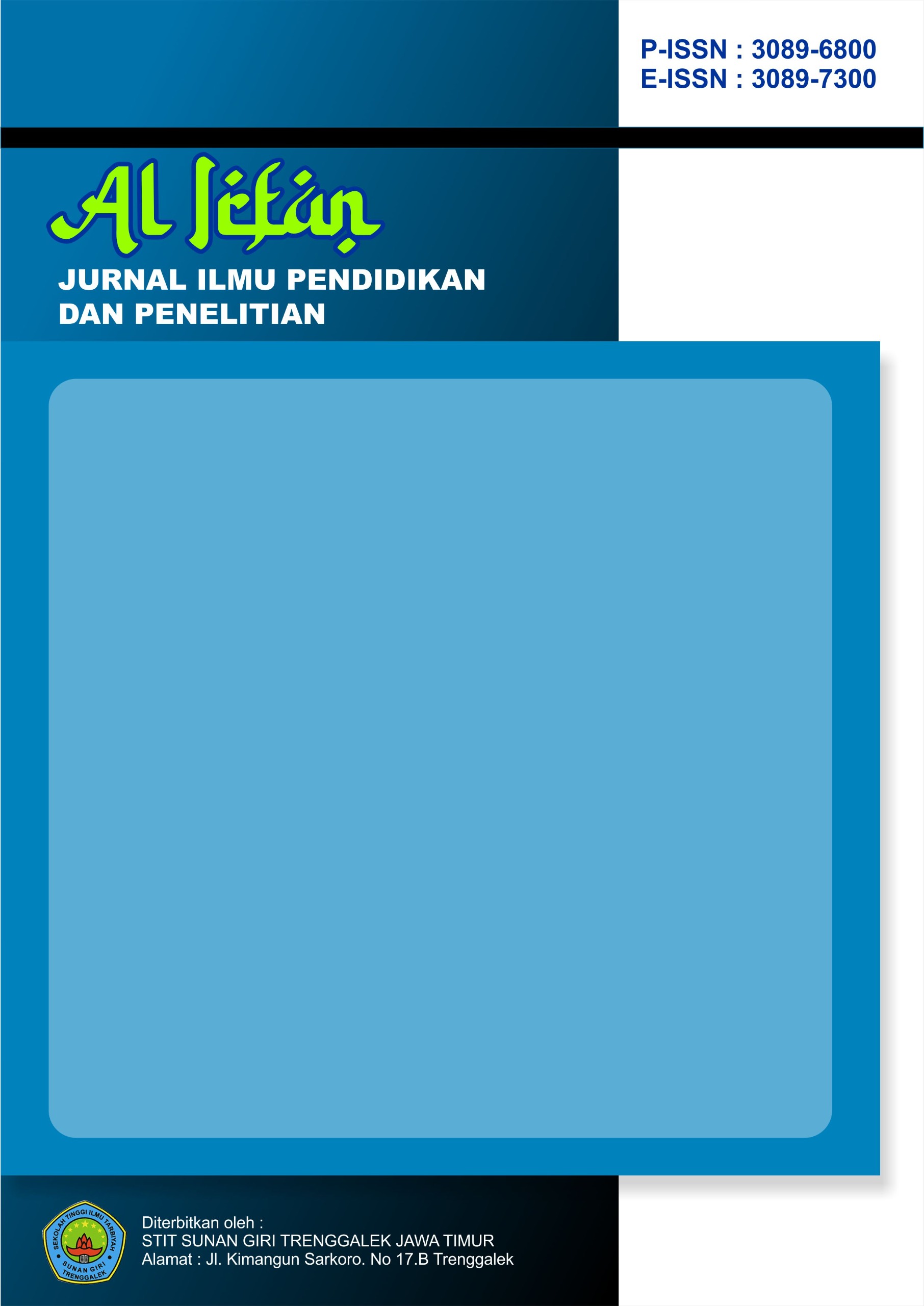Science Learning Strategies through Mixing Colors in Improving Children's Cognitive
DOI:
https://doi.org/10.64877/alirfan.v1i1.20Keywords:
Science learning strategy, Color game, Early childhood EducationAbstract
Science learning for children aims to develop students' abilities, including their mind, heart, and body, as well as developing intellectual, emotional, and physical, as well as cognitive, effective, and psychomotor skills. Research method: Qualitative descriptive research pattern. Data sources: 1. Primary: group A2 children, Head of the institution, and RA PSM Kedungombo teacher; 2. Secondary: Documentation and archives. Data Collection Methods: interviews, observation, documentation. Data Analysis: Data analysis before and after in the field, reduction, display, and verification. The result showed that science learning strategies through color mixing activities can improve children's cognitive abilities. This can be seen from children's activeness when learning, children's ability to answer simple questions given by teachers at RA PSM Kedungombo evaluate children's learning outcomes by reviewing the activities that children have carried out during learning taking place.
References
Fleer, M. (2019). Play in the early years: A cultural-historical approach to early childhood education. Cambridge University Press.
Gelman, S. A. (2009). Learning from others: Children’s construction of concepts. Annual Review of Psychology, 60, 115–140. https://doi.org/10.1146/annurev.psych.59.103006.093659
Heryandini. (2023). The effect of application of science experiment methods in improving cognitive early childhood age: Literature review. UJost, 2(2), 20.
Ketut, N., Kusuma, S., Ayu, G., Riesa, A., Hindu, U., Gusti, N. I., & Sugriwa, B. (2024). Color mixing play to develop science skill for young learners at Pratama Widyalaya. Jurnal Pendidikan, 9(2), 200–205.
Nurkholisoh, D. (2019). Science concepts in early childhood education. The 2nd International Conference on Elementary Education, 2, 1044–1053.
Piaget, J. (1952). The origins of intelligence in children. Norton.
Ramadhani, D. M., & Nurhalimah, E. (2025). The use of clay media to improve color knowledge and science knowledge in the exploration process of early childhood. Jurnal Pendidikan Anak Usia Dini, 5(1), 16–21.
Umiarso, U., Baharun, H., Zamroni, Z., Rozi, F., & Hidayati, N. (2021). Improving children’s cognitive intelligence through literacy management. Jurnal Obsesi: Jurnal Pendidikan Anak Usia Dini, 6(3), 1588–1598. https://doi.org/10.31004/obsesi.v6i3.1817
Vygotsky, L. S. (1978). Mind in society: The development of higher psychological processes. Harvard University Press.
Wahyuningrum, T., & Sa’diya, L. K. (2022). Impact of learning from home: Cognitive development of early childhood education student in pandemic COVID-19. Jurnal Obsesi: Jurnal Pendidikan Anak Usia Dini, 6(5), 5271–5279. https://doi.org/10.31004/obsesi.v6i5.2825
Worth, K. (2010). Science in early childhood classrooms: Content and process. Early Childhood Research & Practice, 12(2), 1–8.
Zahrah, F. (2024). Identifying early childhood science process skills through color mixing experimental activities. Jurnal Pendidikan, 4(2), 441–449.





